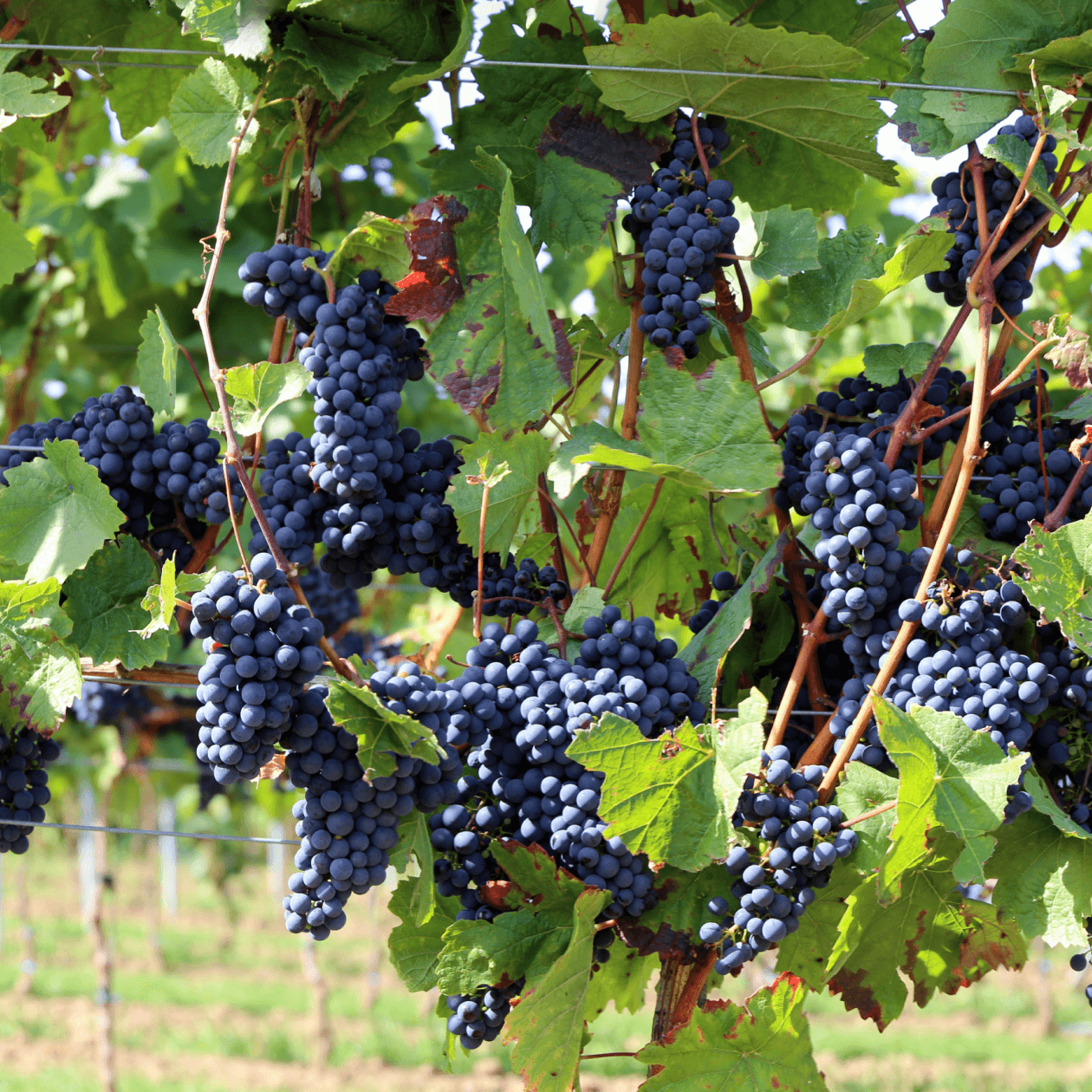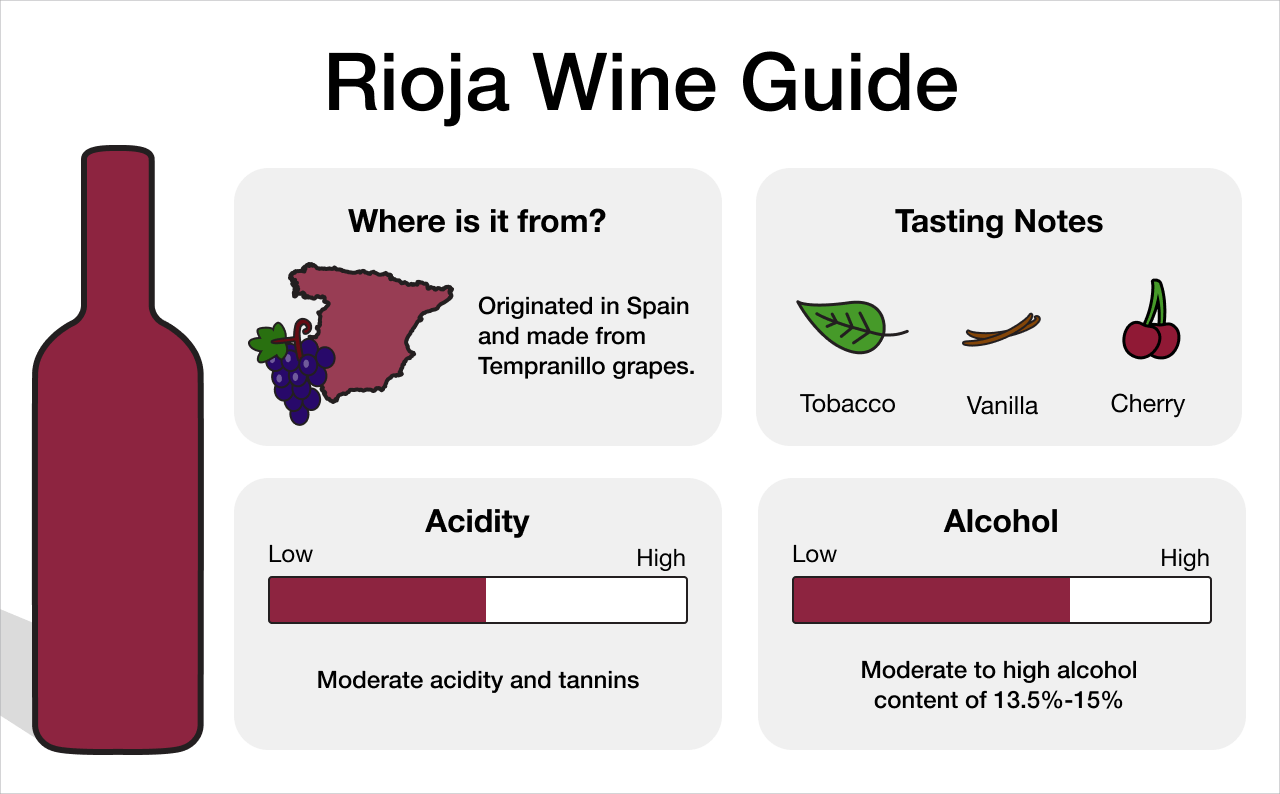
Rioja Wine Guide: The Classic Wine of Spain
Rioja, Spain, also known as “La Rioja,” is a gorgeous region of Northern Spain boasting modern bodegas and historic wine practices.
With a variety of wine styles, climates, and terrain contributing to their diversity, Rioja carries more than just an air of romance.
Learn more about Rioja wine below.
History of Rioja Wine
Located in North Central Spain on the Iberian Peninsula, the autonomous community of Rioja is more of a place than a specific wine. When you’re sipping Rioja, you likely won’t find the grapes used to make it on the bottle. You’ll only know if it’s a red Rioja or a white Rioja.
Not only is Rioja the most famous wine in Spain, but it’s also the most famous Spanish wine worldwide. Over 20% of exported Spanish wine is from Rioja. The only wine that comes close to Rioja’s popularity is Ribera del Duero wine from the region of the same name, though Rioja is still the more popular of the two.
History of Rioja Wine
Rioja goes way back to Roman times, though historians speculate the grape could have started earlier with the Phoenicians.
By the 19th century, the fame of Rioja’s Bordeaux-style wines took a hit when the phylloxera epidemic hit, wiping out much of the world’s vineyards.
In the 1970s, winemakers and consultants worldwide aided in bringing Rioja wines into the modern world.
By 1991, Rioja was named Spain’s first DOCa (denominación de origen calificada or denomination of qualified origin), the highest-quality wine classification.

The Tempranillo Grape
Spain’s native and most prized red grape, Tempranillo, is the heart of Rioja’s best wines. With an affinity for oak aging, this red wine is silky and perfumey and boasts a graceful finish over time.
When young, Tempranillo wines are light and fruity. Tempranillo generally reflects ripe plum and strawberry notes with a woody flavor that tastes pleasantly like a cigar box and becomes smooth and supple when grown in warmer climates.
Rioja Wine Region Breakdown
Spain has 70 official quality wine regions, with Rioja at the top. Let’s look at the climate and regions of Spanish Rioja.
Climate
Influenced by cold mountain ranges and the Atlantic Ocean, Rioja boasts a modern climate with Mediterranean qualities. Summers are hot, with cold winters and heavy rainfall during the growing season.
Soil
Rioja has a seemingly unlimited range of soils, but the main types are clay-limestone, ferrous-clay, and alluvial.
Subregions
Rioja is divided into three different zones, also known as subregions.
1. Rioja Alta
Located in the western part of the region, the vineyards are on the high Sierra Cantabria slopes, resulting in late-ripening grapes with vibrant acidity.
2. Rioja Alavesa
East in Basque country, the red wines here are famous for their lively, fruity flavor profile. Alavesa’s vineyards grow some of Spain’s best grapes, especially around Elciego and Laguardia.
3. Rioja Oriental
Further southeast, the Rioja Oriental subregion boasts some of the best Garnacha (Grenache) grapes, which flourish in its hot Mediterranean climate.

Spanish Wine Types
With abundant Spanish wine regions, this country produces wines of all styles and ages. Here’s a quick rundown of winemaking styles and grape varieties.
Winemaking
Traditional: fragrant, silky, and oaky from extended aging in American oak casks.
Modern-classical: young, rounded wines aged in American or French oak barrels.
Modern: rich, velvety wines aged for less time in French oak.
Rioja Blanco: white wine produced from Viura, Malvasia, and Garnacha blanca in a light, fruity style and aged in oak.
Rioja Red Wine Grapes
Tempranillo: aged in oak with ripe plum, strawberry, and tobacco notes.
Garnacha Tinta: best suited for blends with juicy red fruit flavors and silky textures.
Graciano: dark red hues, bold tannins, high acidity, and crushed cherry and mint aromas.
Mazuelo: a perfect blend of acidity, tannins, and spices.
Maturana Tinta: intense red colors, tannins, and herbaceous notes.
Rioja White Wine Grapes
Viura: fermented in oak and aged in lees with green apple, blossom, and almond aromas.
Malvasia de Rioja: light aromas but creamy and oaky when combined with Viura.
Garnacha Blanca: juicy and powerful fruit aromas when blended with Viura.
Tempranillo Blanco: bright acidity with banana, citrus, tropical fruit, and floral notes.
Maturana Blanca: high acidity and alcohol with banana, citrus, and a slightly bitter aftertaste.
Albillo Mayor: high acidity and low alcohol, best when blended.
Chardonnay: Spanish Chardonnay is elegant with smooth textures and an oak finish.
Sauvignon Blanc: first planted in Rioja in 2007, and tastes excellent with Viura.
Verdejo: similar taste to classic Sauvignon Blanc, first planted in Rioja in the same year.
Is Rioja Wine Sweet or Dry?
With primary flavors of cherry plum, vanilla, and oak, Rioja wine generally has medium sweetness but a mostly dry body with moderate to bold tannins (astringency) and moderately zingy acidity.

Rioja Wine Classification
Spain established the first consejo regulador in 1926, producing the first wine to reach Denominación de Origen status, which involves strict preservation laws enforced by the government, used to establish authenticity of origin.
Classification typically falls into two categories: age and geographical location.
Classification by Age
Joven: wines that have never been aged in oak.
Crianza: wines aged for at least one year in oak and one year in the bottle.
Reserva: wines aged a year in oak and two years in the bottle.
Gran Reserva: fruity and rich, typically aged for two years in oak and three years in bottle.
Classification by Origin
Vinedo Singular: the most restrictive, this classification indicates wines crafted from specific vineyards and estates. Must be produced from vineyards at least 35 years old and aged, bottled, and marketed by the same winery.
Vino de Municipio: crafted from grapes grown and vinified within a single municipality in Rioja.
Vino de Zona: the least restrictive of the three, this requires Rioja wine to be produced in one of the three major subregions.
Explore More of the Rioja Wine Region in Spain
As you can see, Rioja wines have a long, triumphant history and continue to thrive today. Influenced by the soils and climate of Spain, there are endless quality and flavor possibilities.
Discover lush, fruity Spanish Rioja in red, white, and Rosé styles for amazingly affordable prices at our wine shop.
Shop all types of quality Spanish wine and don’t forget to explore our complete wine collection. We know you’ll find something you love.
Visit the Wine Blog for more deep dives on all your favorite wines.









